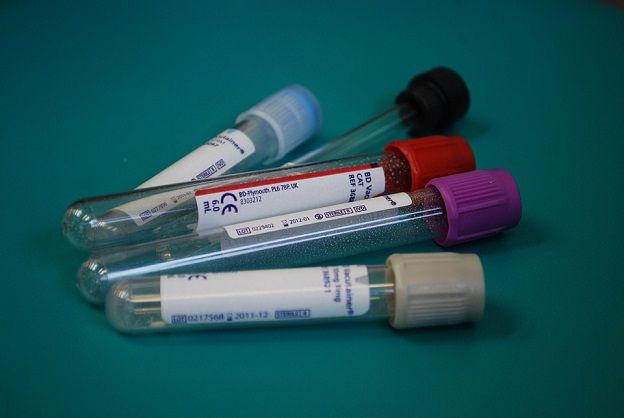IMPROVING HEALTH OF STEEMIANS #20- Systemic Lupus Erythematosus (LUPUS)
Hello my steemit community,

I cannot believe its already the 20th edition of IMPROVING HEALTH OF STEEMIANS. Thank you all for your support and I hope that you learned something from it.
I was thinking a lot about what to post for the anniversary edition and dr.House gave me an idea. Almost in every episode of the show, he is mentioning one certain disease. You probably already know what it is, so let's talk about Systemic lupus erythematosus (SLE) or simply known as LUPUS.
Systemic lupus erythematosus is a chronic, multi-systemic inflammatory disease of autoimmune etiology that occurs mainly in young women. Common manifestations may include arthralgia, arthritis, malar rash, pericarditis, and hematological cytopenia. Diagnosis requires clinical and serological tests. Treatment for the most severe forms of disease requires corticosteroids and sometimes immunosuppressives.
70-90% of cases occur in women (usually reproductive age), but may affect patients of any age, including newborns. The prevalence ranges from 1: 250 in African American women to a prevalence of 1: 1000 to 1: 10,000 in other populations. Increased awareness of mild forms has resulted in more reported cases worldwide. In some countries, the SLE prevalence is close to the one of rheumatoid arthritis. SLE can be triggered by unidentified environmental factors that lead to an autoimmune reaction in genetically predisposed people. Some drugs (eg hydralazine, procainamide, isoniazid) cause reversible lupus-like syndrome.

CAUSE
The exact cause of SLE isn’t known, but several factors have been associated with the disease:
Genetic factors - higher coincidence in monozygotic twins (up to 25%) than in dizygotic twins (3%).
Eight different chromosome parts have been identified as genes associated with the development of lupus. Including some HLA genes, especially A1, BB and DR3.
Hormones - perimenopausal women are most commonly affected, and besides, SLE is most commonly seen in men with Klinefelter's syndrome. Treatment with hormone replacement therapy increases the risk of lupus exacerbation.
Drugs like hydralazine, isoniazid, procainamide and penicillamine may induce a lupus form, which is usually mild.
Ultraviolet radiation can trigger relapses of SLE, especially skin forms.
Exposure to the Epstein-Barrow virus

SIGN AND SYMPTOMS
SLE may develop rapidly with fever (which is common during exacerbation) or gradually over months or years with arthralgia and languor.
- SKELETAL
Patients are usually presented with symptoms similar to rheumatoid arthritis with symmetrical arthralgia of small joints. The joints are painful but are clinically normal, although there is sometimes a slight swelling of soft tissue around the wrist. Deformities due to contractions of the tendons are rare, as well as bone erosion. However, long-lasting disease may develop ulceration of the fingers or deformities of the fingers without bone erosion - Jaccoud's arthropathy. Aseptic necrosis involving the hip or knee is also a rare complication.
- SKIN
The skin is affected in 85% of cases. It is characterized by a butterfly shaped malar rash over the cheeks and nasal bridge. The absence of papules and pustules helps distinguish SLE from rosaceae. Various other skin lesions may also occur , especially on the sun exposed areas of the face and neck, upper chest, and elbows. Photosensitivity occurs in 40-50% of cases, especially in patients with positive anti-Ro antibodie. Long exposure to the sunlight can therefore lead to exacerbation of the disease.
Ulceration of the skin is rare , but ulceration of the mucous membrane may occur, especially on the central part of the hard palate and the anterior nasal septum (formerly called mucosal lupus).
Alopecia is often less-specific cutaneous feature of SLE and can lead to irreversible hair loss.
- HEART
The heart is affected in 25% of cases. Most common cardiac manifestations are pericarditis with small pericardial effusions and mild myocarditis that can lead to arrhythmia's. There are rarely lesions of aortic valve and cardiomyopathy. The non-infectious endocarditis that affects the mitral valve (Libman-Sacks endocarditis) is very rare.
Reynaud's phenomenon, vasculitis, arterial and venous thrombosis may be reported, particularly regarded to antiphospholipid syndrome.
An increased incidence of risk factors for atherosclerosis has also been reported.
- KIDNEYS
The kidneys are the most commonly involved visceral organs in SLE. Post-mortem data suggests that histologic changes in the kidneys are very common, but clinically only occur in approximately 30% of cases, so all patients need regular blood and urine tests. Lupus nephritis may develop at any stage of the disease or it may be the only manifestation of SLE. It can be benign and asymptomatic or progressive and fatal. Lesions vary from benign, glomerulitis to diffuse, potentially fatal, membranoproliferative glomerulonephritis.
Selena Gomez had an kidney transplantation because of SLE.

DIAGNOSIS
Diagnosis is based on clinical criteria, cytopenia and autoantibodies. SLE should be suspected in patients, especially younger women, with any of the signs and symptoms listed above. It should be noted that early lupus can imitate other connective tissue disorders (and other non-invasive tissue disorders), including rheumatoid arthritis.
Routine testing should include:
antinuclear antibodies (ANA) and anti-dsDNA antibodies
complete blood analysis
urinalysis
a chest X-ray
Most clinicians rely on the diagnostic criteria for lupus set up by the American Rheumatism Association. However, the revised criteria proposed by SLICC (Systemic Lupus International Collaborating Clinics) are now preferred.

TREATMENT
To simplify therapy, lupus is commonly classified as mild ( fever, arthritis, pericarditis, headache, rash) or severe (hemolytic anemia, thrombocytopenic purpura, acute vasculitis). In both cases, patients should certainly avoid excessive exposure to sunlight, and it is also necessary to reduce cardiovascular risk factors.
There is no need for therapy for a mild illness. Arthralgias are usually controlled by non-steroidal antireumatics.
For more severe disease treatment includes disease modifying drugs or targeted immune system agents.
PROGNOSIS
The lupus mortality rate has dropped dramatically over the last 50 years. 10-year survival is about 90%. Prognosis is good even in severe forms of the disease if the initial acute phase is well controlled. Serious manifestation however requires heavier therapies, which increase the risk of mortality. Example of such complication is osteoporosis due to the long-term use of corticosteroids. The increased risk of coronary artery disease may contribute to premature death. Lupus patients have an increased long-term risk of developing some cancers, especially lymphomas.

IMAGE SOURCE
REFERENCES
Merck E., The Merck Manual of Diagnosis and Therapy, Merck Manuals, 2011.
Kumar P., Kumar and Clark's Clinical Medicine, Saunders ltd., 2012.
Factual claims which are not sourced are from my own personal experience and med school.
Congrats to this little anniversary! It seems that Steemit will eventually have a little medical base where I can go to refresh my memory from time to time and to learn something new.
Thank you. True, and you also make an incredible contribution with your psychiatry posts :)
Dr. House, “It is never Lupus”. The first thing that came to my mind seeing the title. 👺
Very informative and an amazing health series.
Detailed features, manifestations, s/s of SLE. 👍🏻
Thank you. Its true, its never lupus LOL :)
It is a disease that scares me, several women in my family present it, my checks have always gone well.
The most important thing is to get regular check ups :) Don't worry :))
Glad to find out about your series. Keep up the good work!
Thank you. I hope that you will learn something from them and that they will help you :)
Nice post please check me out @starray1
Epstein-Barr virus I guess!
The number is quite weird.African-American are protected against it.So, there must be some strong immune control.
True about EBV, lapsus linguae :) What do you mean by African-American woman are protected against it?
Looking at the prevalence rate African-American woman looks protected .
No, prevalence is a measurement of all individuals affected by the disease at a particular time. So if the number is 1:250, it means that they are more affected by the disease :)
oh yes! I read that wrong.
This is a brilliant write up on SLE @doctorcro Thank you. And to know you are one of us on the first steemit clinic @air-clinic. We will love you to take some discussions , is that okay?
Yes, its ok . When I take my holidays, I can join air-clinic for some discussions :))
This is very informative
Well done @doctorcro
#Steemitbloggers
Didn't know much about this
Thanks @doctorcro
Well detailed and very informative